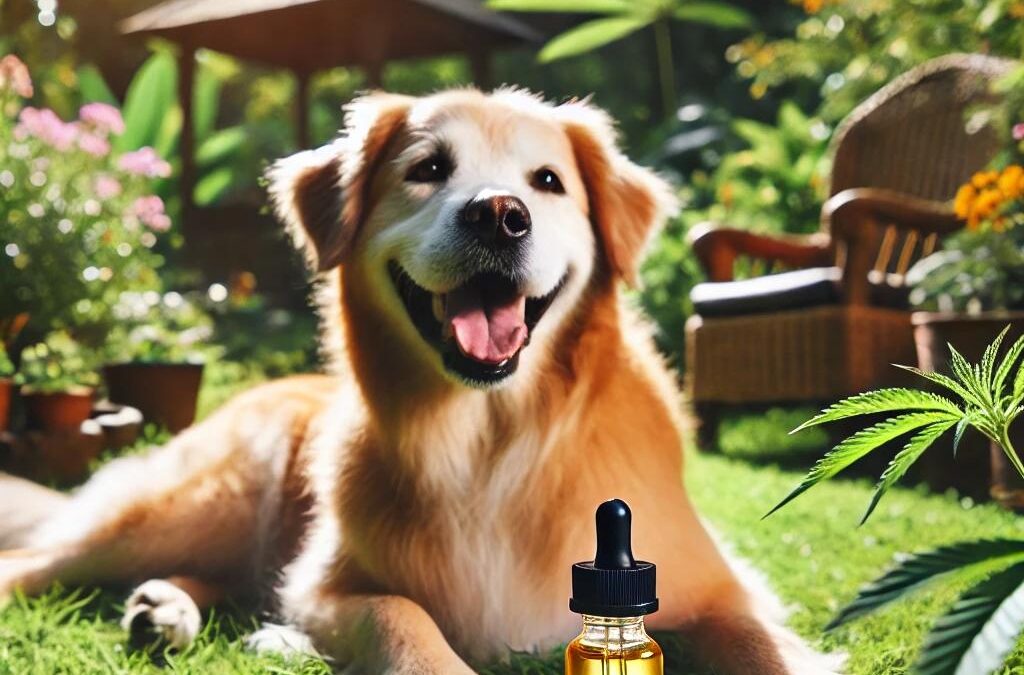
執筆者 TCMVET | 2024年11月15日 | 医薬品と治療法
医薬品や獣医薬について考えるとき、私たちは特定の病気の治療や回復の促進といった主な用途を思い浮かべることが多い。しかし、 アヴマクインは、その用途だけでなく、その驚くべき汎用性でも注目を集めています。獣医分野で Avmaquin が傑出している理由を詳しく調べ、予想外の方法でその可能性を探ってみましょう。
Avmaquinとは何ですか?
アヴマクインは主に 抗菌剤 獣医学で使用される。特に家畜や家禽のさまざまな細菌感染症と戦うために処方されています。有害な細菌を標的とする有効成分により、動物の健康と生産性を維持し、動物の幸福を確保し、農家の経済的損失を最小限に抑えます。しかし、Avmaquin が他と一線を画しているのは、抗菌特性を超えた幅広い影響です。
1. 畜産生産性の盾
農業は、家畜の間で急速に広がる可能性のある細菌性疾患に常に直面しています。アヴマクインは予防的解決策として登場し、これらの発生から動物を保護する盾として機能します。感染症を治療するだけでなく、 予防的適用 群れや群れの全体的な健康状態を向上させ、成長率の向上と生産性の向上につながることが証明されています。
2. 持続可能な農業におけるゲームチェンジャー
現代の農業では、持続可能性に焦点が移りつつあります。アヴマクインは統合農業の実践の一環として有望であることが示されています。広域抗生物質の必要性を減らすことで、 抗菌薬管理抗生物質耐性のリスクを最小限に抑えるという重要な目標を掲げています。生産性と責任ある慣行のバランスを取ろうと努力している農家にとって、これは貴重なツールとなります。
3. 家畜を超えて:より広範な影響
主に動物向けに設計されていますが、研究者たちはアヴマクインの特性が他の分野での革新につながるかどうかを調査しています。例えば、
- 養殖業: 養殖業界で懸念が高まっている細菌性疾患から魚類の個体群を守る可能性を探る試験が行われている。
- ペット動物: 予備研究では、アヴマクインが猫や犬の特定の細菌感染症に応用できる可能性があり、ペットケア市場への進出が拡大する可能性があることが示唆されている。
4. 研究開発の触媒
アヴマクインは、新しい製剤の足掛かりとしても機能しています。特定の病原体を標的とするその成功は、 カスタマイズされた抗菌ソリューション ニッチな獣医ニーズに合わせて調整されています。科学者たちはその分子構造を活用して、動物の健康問題への取り組み方を変革する可能性のある次世代の治療法を設計しています。
5. 倫理的影響:懸念事項への対応
獣医用抗菌剤に関する議論は、倫理的な懸念を取り上げなければ完結しません。食品の安全性と動物福祉に関する消費者の意識が高まる中、アヴマクインは、標的治療が倫理的な農業慣行とどのように整合するかを示す例として際立っています。アヴマクインの使用により、包括的な抗生物質治療への依存が軽減され、 好ましい選択 良心的な農家のために。
アヴマクインの役割を再考する
Avmaquin が本当に注目に値するのは、獣医学のあり方を再定義する可能性があることです。その応用が治療だけにとどまらず、予防医療、持続可能な農業、さらにはペットの健康にも影響を与える未来を想像してみてください。その能力についてさらに理解が深まるにつれ、Avmaquin は獣医学の革新の礎となり、伝統と先進的なソリューションのギャップを埋めることができるでしょう。
最終的な考え: 見た目以上のもの
Avmaquin は単なる獣医薬ではありません。科学が動物の健康と農業の複雑な課題にどのように対処できるかを示す象徴です。その汎用性、持続可能性、そしてより幅広い用途への可能性は、注目に値するトピックです。あなたが農家、獣医、ペットの飼い主のいずれであっても、Avmaquin は私たちが世話するすべての動物のより健康な未来を切り開く鍵を握っているかもしれません。

執筆者 TCMVET | 2024年10月15日 | 医薬品と治療法
舐め肉芽腫は、末端舐め皮膚炎とも呼ばれ、犬とその飼い主の両方にとって厄介で、慢性的な症状であることが多いです。命にかかわることはめったにありませんが、この症状の管理は長期にわたる場合があります。舐め肉芽腫の治療には通常、試行錯誤が必要で、適切な治療の組み合わせを見つけるために獣医に何度か通う必要がある場合があります。この記事では、犬の舐め肉芽腫を管理するための効果的な戦略、早期介入の重要性、再発を防ぐためのヒントについて説明します。
舐め肉芽腫を理解する
舐め肉芽腫は、犬が特定の場所(通常は脚)を強迫的に舐めることによって生じる皮膚病変です。時間が経つにつれて、この反復行動は炎症、感染症、皮膚の肥厚につながります。犬は、アレルギー、痛み、退屈、不安など、さまざまな理由で舐め肉芽腫を発症することがあります。
早期治療が重要な理由
舐め肉芽腫を早期に治療した犬は、慢性または重篤な症状の犬よりも予後が良い傾向があります。治療せずに放置すると、肉芽腫は重篤な感染症に進行し、皮膚の下にある筋肉や骨に影響を及ぼす可能性があります。さらに、犬の口には有害な細菌が含まれているため、症状の悪化を防ぐために舐め続けるのを防ぐことが重要です。
治療における試行錯誤
舐め肉芽腫の適切な治療計画を見つけるには、多くの場合、試行錯誤が必要です。獣医師は、次のような治療の組み合わせを推奨する場合があります。
- 医薬品
感染症の治療や腫れの軽減には、抗生物質や抗炎症薬が一般的に処方されます。場合によっては、獣医師がかゆみを抑えるためにコルチコステロイドや抗ヒスタミン薬を勧めることもあります。
- 行動管理
舐め肉芽腫の多くは不安やストレスによって引き起こされるため、根本的な行動上の問題に対処することが重要です。鎮静サプリメント、行動療法、運動や精神刺激の増加は、犬の舐めたい衝動を軽減するのに役立ちます。
- 保護カラー
さらなる舐めを防ぐ最も効果的な方法の 1 つは、e カラー (エリザベスカラー) などの保護カラーを使用することです。このカラーは、肉芽腫が悪化しないように、特に犬が一人でいるときや夜間は装着したままにする必要があります。
- Topical Treatments
皮膚を落ち着かせ、舐めるのを防ぐ局所用クリームやスプレーを塗ると、治癒が早まる可能性があります。これらの治療は、感染を防ぐために抗生物質と併用されることがよくあります。
舐め肉芽腫の長期管理
舐め肉芽腫を患う犬の多くは、完全に回復するのではなく、長期にわたる管理が必要になります。特に根本的な問題が解決されていない場合は、この症状が再発する可能性があることを理解することが重要です。引っ越しや日常生活の変化など、犬の環境がストレスを感じると、再発を引き起こす可能性があります。
舐め肉芽腫を長期的に管理するには、ペットの飼い主は次のことに重点を置く必要があります。
- 獣医の定期検診
状態を監視し、必要に応じて治療計画を調整するには、定期的な獣医の診察が不可欠です。
- 環境エンリッチメント
インタラクティブな玩具、定期的な散歩、精神的な挑戦などの環境の充実を通じて退屈とストレスを軽減することは、強迫的な行動を防ぐのに役立ちます。
- 綿密な監視
再発の兆候を注意深く観察してください。早期に介入することで、より積極的な治療が必要になるのを防ぐことができます。
舐め肉芽腫は犬にとっても飼い主にとっても困難な症状です。命にかかわることはないかもしれませんが、この症状の管理には根気と忍耐が必要です。早期治療、行動管理、長期ケアは、さらなる合併症を防ぎ、犬が快適に暮らせるようにするために不可欠です。常に獣医師に相談して最善の処置を行い、この慢性的な症状を管理するための継続的なケアに備えてください。

執筆者 TCMVET | 2024年9月19日 | 医薬品と治療法
手術後の犬のケアは、回復過程において非常に重要な部分です。犬が通常の手術を受けた場合でも、より複雑な手術を受けた場合でも、術後のケアは、犬が適切に治癒し、合併症を回避するために重要な役割を果たします。この記事では、手術後の犬のケア方法、犬の快適さを確保し、スムーズな回復を促進する方法について包括的なガイドを提供します。
1. 犬の回復スペースの準備
手術後に犬が家に帰る前に、犬が休息して回復できる安全で快適な空間を作ることが重要です。この空間には以下のものが必要です。
- 静かなエリア: ストレスを軽減するために、犬を騒音、他のペット、人通りの多い場所から遠ざけてください。
- 柔らかい寝具特に長時間横になる場合には、体を支えるために快適で清潔な寝具を用意してください。
- 食料や水への容易なアクセス: 動きを最小限に抑えるために、餌と水のボウルを手の届く範囲に置きます。
- 動きが制限される: 犬が飛び降りたり怪我をしたりする可能性がある階段や高い場所へのアクセスを制限します。
2. 痛みと薬の管理
手術後、獣医師は痛みの緩和、感染の予防、治癒の促進のために薬を処方するでしょう。薬を安全に取り扱う方法は次のとおりです。
- 指示に注意深く従ってください: 獣医師の指示通りに薬を投与してください。投薬を飛ばしたり、獣医師に相談せずに市販薬を犬に与えたりしないでください。
- 副作用を監視する: 嘔吐、下痢、過度の無気力などの副作用の兆候に注意し、異常に気付いた場合は獣医師に連絡してください。
- 快適さと癒し: 痛みがあると、犬は不安になったり、落ち着きがなくなったりすることがあります。優しい声をかけたり、優しく撫でたり、お気に入りのおもちゃで慰めてあげると、犬を落ち着かせるのに役立ちます。
3. 手術部位のモニタリング
手術後のケアで最も重要なことの 1 つは、手術部位を清潔に保ち、感染を防ぐことです。次の点に注意してください。
- 感染の兆候を確認する: 毎日、切開部を観察して、赤み、腫れ、分泌物、悪臭などの感染の兆候がないか確認してください。これらの兆候に気付いた場合は、すぐに獣医に連絡してください。
- 舐めたり噛んだりしないようにする: 犬は切開部を舐めたり噛んだりすることが多く、感染症や開いた傷につながる可能性があります。この行動を防ぐために、エリザベスカラー(コーン)または犬用リカバリースーツを使用してください。
- 患部を清潔で乾燥した状態に保つ: 湿気は感染症の原因となる可能性があるため、獣医から問題なしと診断されるまで犬を入浴させないでください。傷口が汚れた場合は、獣医が承認した消毒液で優しく洗浄してください。
4. 犬の活動レベルを管理する
数日後には犬の体調は良くなるかもしれませんが、適切な治癒のためには身体活動を制限することが重要です。活動レベルを管理する方法は次のとおりです。
- 獣医の指示に従ってください: 獣医師は、犬が通常の活動を再開できる時期について具体的なガイドラインを提供します。傷口が再び開いたり、さらに怪我をしたりしないように、これらのガイドラインに厳密に従うことが重要です。
- リード付き散歩のみ最初の数週間は、犬の運動を短くゆっくりとしたリード付き散歩に制限してください。獣医師が安全であると確認するまで、走ったり、ジャンプしたり、激しく遊んだりすることは避けてください。
- 精神刺激: 犬に身体的な負担をかけずに楽しませるには、パズルおもちゃやインタラクティブなおやつディスペンサーを用意しましょう。精神的な刺激は、回復期間中の退屈を防ぐのに役立ちます。
5. 栄養と水分補給
適切な栄養と水分補給は、犬の回復過程の鍵となります。手術後は、犬が適切なケアを受けられるように、以下のヒントに従ってください。
- 少量の食事を頻繁に提供する: 手術後、犬の食欲が減退することがあります。食欲が正常に戻るまで、通常の食事の量を減らすか、獣医が推奨する刺激の少ない食事を与えてください。
- 水分補給を徹底する: 犬が常に新鮮な水を飲めるようにしてください。犬が水を飲みたがらない場合は、食べ物に少し水を加えたり、氷を舐めさせたりするようにしてください。
- サプリメント: 場合によっては、獣医師が犬の治癒を助け、免疫システムを強化するために、オメガ 3 脂肪酸やプロバイオティクスなどのサプリメントを勧めることがあります。
6. 犬の感情的な健康を管理する
犬も人間と同様、手術後に不安やストレス、さらには憂鬱を感じることがあります。回復期に犬の精神的健康をサポートする方法をいくつかご紹介します。
- 安心感と安心感を与える: 犬と一緒に過ごす時間を増やし、優しく愛情を注ぎ、近くにいてストレスを軽減しましょう。
- ルーチンを維持する: 食事、トイレ休憩、投薬の定期的なスケジュールを守ることで、犬に平常心を与え、より安心感を与えることができます。
- 犬に負担をかけないようにする: ストレスや過度の興奮を防ぐために、回復期間中は訪問者や刺激を制限してください。
7. 獣医のフォローアップ診察
犬の治癒の進行状況を監視し、懸念事項に対処するには、獣医師による定期的なフォローアップ診察が不可欠です。診察中は次の点に留意してください。
- 縫合部分をチェックしてもらう獣医師は切開部を検査して適切に治癒しているかどうかを確認し、必要に応じて抜糸することがあります。
- 回復の進捗状況を話し合う: 犬の行動、食欲、運動能力の変化について獣医に相談し、継続的なケアについては獣医のアドバイスに従ってください。
- 長期介護について尋ねる: 犬が癌などのより深刻な病気のために手術を受けた場合、獣医師はさらなる治療、生活習慣の変更、または長期の投薬を勧める場合があります。
手術後の犬の世話には、忍耐、注意、そして獣医の勧告に従うという決意が必要です。快適な回復環境を整え、投薬と痛みを管理し、手術部位を監視し、犬の活動レベルを管理することで、犬のスムーズで順調な回復が期待できます。何か心配なことがあれば必ず獣医に相談してください。また、犬の健康は自宅で受けるケアに左右されることを忘れないでください。

執筆者 TCMVET | 2024年9月10日 | 医薬品と治療法
飼い主が犬の健康を改善する方法を探している中、特に癌のような難しい診断に直面しているとき、CBD(カンナビジオール)が強力な天然の選択肢として浮上しています。大麻植物から抽出されたCBDは精神活性がなく、犬の健康をサポートする可能性について広く研究されてきました。犬の痛みや不安の管理に使用されることはよく知られていますが、最近の研究では癌治療におけるその役割が強調されており、腫瘍の成長を抑え、従来の治療の効果を高める潜在的な利点があります。
CBD が犬の癌治療にどのように役立つか
カンナビジオールは、犬の健康全般の維持に不可欠なエンドカンナビノイド システム (ECS) と相互作用して作用します。ECS は、痛みの管理、免疫反応、炎症などの重要な機能を調節します。癌に罹患した犬の場合、CBD の ECS への影響は期待できます。癌の悪影響を軽減しながら、体の癌との戦いをサポートできるからです。
いくつかの研究によると、CBD は癌細胞にアポトーシス、つまりプログラムされた細胞死を誘導し、癌細胞の増殖を防ぐ役割を果たしている可能性があるとされています。健康な細胞を犠牲にせずに癌細胞だけを選択的に標的にするこの能力により、CBD は犬の癌と闘うための潜在的に強力なツールとなります。
に掲載された研究 薬理学と実験治療学ジャーナル CBD は犬の癌細胞の生存率を低下させたと報告されています。この研究結果は、特にリンパ腫や骨肉腫などの悪性癌において、CBD が腫瘍の進行を遅らせる可能性があることを示唆しています。
CBDと従来の癌治療の相乗効果
がん治療における CBD の最も興味深い側面の 1 つは、化学療法や放射線療法などの従来の治療法を補完する可能性です。これらの治療法はがん細胞を標的にするのに効果的であることが多いですが、吐き気、痛み、疲労などの重大な副作用を引き起こす可能性があります。
新たな研究によると、CBD はこれらの副作用を軽減し、従来の癌治療の有効性を高める可能性があることがわかっています。炎症を軽減し、痛みを和らげることで、CBD は犬にとって治療プロセスをより耐えやすくし、治療中の生活の質を向上させます。
さらに、CBD は化学療法や放射線治療中に健康な細胞を損傷から保護する能力があることが示されており、これらの集中治療を受けている犬にとってより良い結果とより早い回復につながる可能性があります。
癌に罹患した犬の痛みと不安の管理
がんを患う犬は、病気そのものや受けた治療が原因で、慢性的な痛みや不安の増加に悩まされることがよくあります。CBD は、両方の症状を管理する自然で非侵襲的な方法を提供します。CBD は ECS と相互作用して脳内の痛みの信号を軽減し、不快感に苦しむ犬に安らぎを与えます。
さらに、CBD には犬の不安レベルを軽減する鎮静作用があり、獣医の診察中や治療からの回復中に犬が快適にリラックスできるようにします。この二重の効果 (身体的ストレスと精神的ストレスの両方を管理する) により、CBD は癌と闘う犬の全体的な健康状態を改善する貴重なツールとなります。
犬に対するCBDの安全な使用の確保
CBD は一般的に犬によく耐えられますが、ペットの飼い主は、ペットのがん治療計画に CBD を導入する前に獣医に相談することが重要です。投与量と製品の品質は、CBD の安全性と有効性を確保する上で重要な要素です。獣医は、有害な添加物や汚染物質を含まない、第三者によるテスト済みの高品質の CBD 製品を推奨できます。
また、CBD が、犬が癌治療の一環として服用している薬に干渉しないことを確認することも重要です。獣医師は、適切な投与量、投与のタイミング、従来の治療法との潜在的な相互作用について指導することができます。
犬の癌治療における CBD の将来
CBD とその潜在的な治療効果に関する研究が進むにつれ、犬の癌治療における CBD の役割が明らかになりつつあります。従来の治療法を補完するために使用されるか、癌治療への総合的アプローチの一部として使用されるかにかかわらず、CBD は、この困難な診断に直面している犬の健康と快適さをサポートする有望な方法を提供します。
腫瘍の成長抑制から痛みや不安の管理まで、CBD の幅広い効果は、犬の癌治療計画を強化する自然な方法を探しているペットの飼い主に希望を与えます。いつものように、CBD が犬の独自のニーズに合わせて安全かつ効果的に使用されるようにするには、獣医師と緊密に協力することが重要です。
より多くの研究によって CBD の潜在的な利点が明らかになるにつれ、犬の癌治療における CBD の役割は拡大し続けています。癌細胞の生存率の低下から従来の治療の有効性の向上、痛みや不安の管理まで、CBD は癌に苦しむ犬をサポートするための自然で総合的なアプローチを提供します。CBD を犬の癌治療に取り入れることに関心のある飼い主は、ペットが可能な限り最も安全で効果的な治療を受けられるように、獣医師の指導を求める必要があります。

執筆者 TCMVET | 2024年8月20日 | 医薬品と治療法
犬の不安は、あらゆる年齢や品種のペットに起こりうる一般的な問題です。大きな音、離れ離れ、環境の変化など、原因が何であれ、不安は行動上の問題を引き起こし、犬の全体的な健康に影響を与える可能性があります。幸いなことに、犬の不安を管理して軽減し、より穏やかで幸せな生活を促進するのに役立つ自然療法がいくつかあります。この記事では、犬の不安に対するさまざまな自然療法について説明し、ペットの飼い主に総合的なケアのアプローチを提供します。
犬の不安を理解する
犬の不安は、過度の吠え声、破壊的な行動、震え、落ち着きのなさ、さらには消化器系の問題などの身体的症状など、さまざまな形で現れます。犬の不安の引き金を特定し、その根本原因を理解することが、問題に効果的に対処する第一歩です。
犬の不安を和らげる自然療法
- ハーブサプリメント: 特定のハーブには、犬の不安を軽減する鎮静作用があります。カモミール、バレリアンの根、パッションフラワーは、リラックス効果やストレス軽減を目的とした天然サプリメントとしてよく使用されます。
- CBDオイル: カンナビジオール (CBD) オイルは、犬の不安を和らげる人気の自然療法です。エンドカンナビノイド システムと相互作用し、ハイになることなく鎮静効果を生み出します。多くのペットの飼い主が、特に分離不安や騒音恐怖症の犬に CBD オイルが効果的であると報告しています。
- アロマテラピーラベンダーやカモミールなどのエッセンシャル オイルは、犬に鎮静効果をもたらします。ディフューザーを使用したり、希釈したエッセンシャル オイルを犬の首に巻いたバンダナに塗布したりすると、落ち着く環境を作り出すのに役立ちます。
- 運動と精神刺激: 犬の不安を軽減するには、定期的な運動が不可欠です。運動は余分なエネルギーを燃焼させ、自然なストレス解消剤として働くエンドルフィンを放出します。さらに、インタラクティブなおもちゃやトレーニング演習を通じて精神的な刺激を与えると、犬が集中力を保ち、不安の引き金となるものに集中しにくくなります。
- 音楽療法: クラシック音楽やペット用に特別に作られたリラクゼーション トラックなど、心を落ち着かせる音楽を流すと、不安な犬を落ち着かせるのに役立ちます。音楽療法はストレス レベルを軽減し、ペットにとってより穏やかな環境を作り出すことがわかっています。
- マッサージとタッチセラピー: 優しいマッサージとタッチセラピーは、リラックス効果を促し、飼い主とペットの絆を深めることで、犬の不安を軽減するのに役立ちます。ゆっくりとした円運動や耳を優しくさするなどのテクニックは、心を落ち着かせる効果があります。
- 食事の調整: 特定の食品やサプリメントは犬の不安感を抑えるのに役立ちます。魚油に含まれるオメガ 3 脂肪酸は、脳の健康をサポートし、不安感を軽減することが知られています。さらに、七面鳥やカボチャなど、トリプトファンを豊富に含む食品を加えると、セロトニン レベルが高まり、落ち着きが促進されます。
- 一貫性とルーチン: 一貫した毎日のルーチンを確立すると、犬に安定感と予測可能性を与え、犬の不安を軽減するのに役立ちます。定期的な食事の時間、散歩、就寝時の習慣は、不安の管理に大きな違いをもたらします。
獣医に相談すべきとき
自然療法は非常に効果的ですが、犬の日常生活に新しい治療法を取り入れる前に獣医に相談することが重要です。犬の不安がひどい場合や、すでに薬を服用している場合は特に重要です。獣医は犬のニーズに最適な治療プランをカスタマイズするのに役立ちます。
自然療法は、犬の不安を管理する穏やかで効果的な方法を提供し、ペットがよりリラックスして幸せな生活を送れるよう支援します。犬の不安の原因を理解し、ハーブサプリメント、CBD オイル、アロマセラピー、運動などのホリスティック治療を取り入れることで、健康を促進する落ち着いた環境を作り出すことができます。犬が自然に不安を克服できるようにするには、一貫性と忍耐が鍵となることを忘れないでください。

執筆者 TCMVET | 2024年7月31日 | 医薬品と治療法
犬の癌は複雑で多面的な病気で、さまざまな合併症を引き起こす可能性があります。その 1 つが血小板減少症です。血小板数の低下を特徴とする血小板減少症は、犬の健康と癌からの回復能力に重大な影響を与える可能性があります。癌と血小板減少症の関連性を理解することは、罹患した犬に総合的なケアを提供する上で非常に重要です。この記事では、その関連性について説明し、この病気を効果的に管理するための洞察を提供します。
血小板減少症を理解する
血小板減少症は、血液中の血小板数が正常値を下回ると発生します。血小板は血液凝固に不可欠であり、不足すると出血やあざが増えます。犬の血小板減少症の一般的な兆候は次のとおりです。
- 点状出血(皮膚に現れる小さな赤または紫色の斑点)
- 過度のあざ
- 切り傷や傷からの出血が長引く
- 尿や便に血が混じる
- 鼻血
- 無気力と衰弱
犬の癌と血小板減少症の関連性
犬の癌の中には、血小板減少症を引き起こす可能性があるものが数種類あります。これには以下のものが含まれます。
- 白血病: この癌は、血小板が生成される骨髄に影響を及ぼします。癌細胞が増殖すると、健康な細胞が排除され、血小板の生成が減少します。
- リンパ腫: リンパ系の癌は骨髄にも影響を及ぼし、血小板数を減少させる可能性があります。
- 血管肉腫: 血管肉腫は血管に発生する癌の一種で、内出血を引き起こし、血小板数の減少につながる可能性があります。
- 多発性骨髄腫: この癌は骨髄中の形質細胞に影響を及ぼし、血小板の生成を妨げる可能性があります。
癌を患う犬の血小板減少症の診断
癌に罹患した犬の血小板減少症を管理するには、早期発見と診断が重要です。獣医師は通常、以下の方法を使用します。
- 全血球数(CBC): この検査では、血小板を含むさまざまな血液細胞のレベルを測定し、血小板減少症を特定します。
- Bone Marrow Aspirate: この検査では骨髄のサンプルを採取して血液細胞の生成を調べ、血小板数の低下の原因を特定します。
- 凝固検査: これらの検査は血液の凝固能力を評価し、血小板機能に関する追加情報を提供します。
癌に罹患した犬の血小板減少症の管理
血小板減少症を効果的に管理するには、根本的な癌と血小板欠乏症の両方に対処する必要があります。治療戦略には以下が含まれます。
- がん治療: がんを除去または縮小するための化学療法、放射線療法、または手術は、根本的な原因を標的にして血小板減少症を軽減するのに役立ちます。
- 医薬品: 血小板の生成を促進したり、血小板の破壊を減らすために、コルチコステロイドや免疫抑制剤などの薬剤が使用されることがあります。
- 輸血: 重症の場合は、犬の状態を安定させるために血小板輸血または全血輸血が必要になることがあります。
- 支持療法: 怪我を防ぐために安全な環境を提供し、出血の兆候を監視することは、ケアの重要な側面です。
Holistic and Supportive Therapies
従来の治療法に加えて、ホリスティック療法は全体的な健康と幸福をサポートします。
- 栄養サポート: ビタミンやミネラルが豊富なバランスの取れた食事は、免疫機能と全体的な健康をサポートします。
- Herbal Supplements: エキナセアやミルクシスルなどの特定のハーブは、免疫の健康と肝機能をサポートする可能性があります。サプリメントを与える前に必ず獣医師に相談してください。
- ストレス軽減: 穏やかな運動、仲間との交流、安定した環境を通じてストレスを最小限に抑えることで、犬の生活の質を向上させることができます。
血小板減少症は、犬のがん治療を複雑にする可能性のある深刻な症状です。がんと血小板減少症の関係を理解し、早期診断と包括的な管理を行うことが、治療結果を改善するために不可欠です。従来の治療と支持療法を組み合わせることで、愛犬がこの困難な旅をより快適に、より健康に乗り越えられるようサポートできます。






